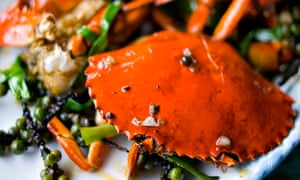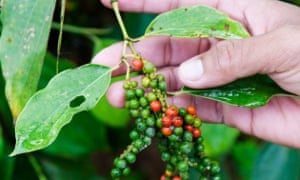The foodie traveller in ... southern Cambodia
Cambodia’s Kampot pepper is among the world’s best but it was nearly
lost forever under the Khmer Rouge regime. Luckily a few farmers kept
their cultivation skills alive and today there is demand from across the
world

It was well received, and this year the world price of Kampot pepper
rose to an all-time high – with farmers saying they’re still only
producing about 30% of demand. The best are cultivated using organic
methods, with crab shells as fertiliser to nurture the climbing stems,
and fallen branches as supports.

Kampot pepper goes well with fish and shellfish, and is available by
mail order in black, white or pink, but in Cambodia you can eat fresh
green peppercorns still on their edible stalks: they’re served all over
the country but are at their best in their home province. The seaside
town of Kep, near the Vietnamese border, is the crab capital of
south-east Asia,
and restaurants in its seafront crab market – a collection of stilted
shacks – sell fried, freshly caught crab with Kampot pepper. That’s a
world-class treat for just £2-3.
Or to get even more involved, there’s the nearby Vine Retreat (doubles from $25), an organic pepper farm with accommodation, yoga and saltwater swimming pool.


No comments:
Post a Comment